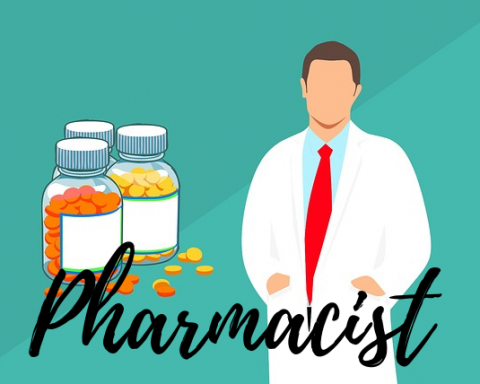You may not realize it, but your community pharmacist does so much more than fill the prescriptions your primary healthcare provider writes for you.
In fact, pharmacists are vital to the health and wellness of the people in the areas they serve on the front line, and they play a key role when it comes to medication adherence.
Pharmacists help their communities and, indeed, the medical industry as a whole by administering vaccinations, making drug recommendations, providing access to medical care in underserved areas, contributing to many different fields in the medical profession, and so much more.
1. Vaccinations
You may be surprised to learn that most pharmacists can administer almost every CDC-recommended vaccine. Within the last 25 years, the number of states that allowed pharmacists to administer vaccines has grown from 9 to 50 states.
Now, it’s easy and convenient for all community members to remain up-to-date on vital immunizations – such as the seasonal flu vaccine.
To become certified immunizers, many pharmacists take additional training courses, and they all work within their state’s guidelines and protocols.
2. Over-the-Counter Drug Recommendations
Common but uncomfortable ailments like head colds, gastrointestinal distress, sinusitis, headaches, eczema, athlete’s foot, etc., can be treated by a community pharmacist if no prescription is needed.
Pharmacists are trained to treat patients and recommend medication, and it’s free of charge. This is especially helpful to members of the community who can’t afford to see a doctor. Often, these common medications are inexpensive because pharmacies buy their pharmacy supplies wholesale.
3. Increased Access to Care
In America, 91% of people live within a five-mile radius of a community pharmacy. In rural areas, people may struggle to find a primary care doctor or specialist in their vicinity; however, they are more likely to have access to a pharmacy nearby.
Pharmacies have also become more accessible because many now send mail orders or have taken their services online.
4. Contributing to Many Areas of Healthcare
Although many pharmacists choose to work behind a counter in a pharmacy, others decide to become lecturers in college pharmacy programs.
Some lend their services to community hospitals, using their knowledge and skillset to advise physicians on the best medication for their patients, while others use their skills in drug manufacturing companies to develop, refine, and improve pharmaceuticals.
Pharmacists work collaboratively with primary care health professionals to provide continuous care and improve patients’ health outcomes. In fact, studies have shown that having a pharmacist conduct hospital rounds and provide care in ambulances reduces medical errors, as well as costs.
Pharmacists play an important role in reducing patient readmission rates, and they also work with physicians to help with chronic disease management.
Pharmacists are also employed by government agencies, like the Food and Drug Administration (FDA) or the National Institutes of Health (NIH). They also work in care facilities and many other medical environments.
5. Medical Therapy Management
MTM – or Medical Therapy Management – is defined by the Centers for Disease Control (CDC) as having five elements. They are drug therapy review, personal medication records, medication-related action plans, intervention and referral, and documentation or follow-up.
For community members with chronic conditions, high prescription costs, complex medication regimes, and multiple prescribers contributing to their care, MTM is extremely useful.
Patients who find themselves overwhelmed by their medication routines can turn to their community pharmacist to get advice about the time they must take their medication, possible side effects, and drug interactions. Because pharmacists are trained to look at a patient’s health holistically, they are equipped to identify medications that need to be added to or subtracted from a patient’s medical regime.
6. Antibiotic Stewardship
Overuse and the incorrect selection of antibiotics have caused a crisis in the medical community because it has resulted in antibiotic-resistant bacteria.
Antibiotic-resistant bacteria are strains of bacteria that have evolved – they do not respond to antibiotics that worked in previous years. Pharmacists are best-equipped to advise patients on which antibiotics are effective against specific bacteria and which are ineffective.
Pharmacists have also undergone training in patient counseling, so they can explain why completing a course of antibiotics is vital and what side effects the patient may experience. They can also explain why antibiotics should not be used for viral infections.
7. Front-Line Disease Testing
Pharmacists are able to streamline medical testing for common ailments and prescribe an appropriate treatment when they confirm a case. For instance, pharmacists are well-equipped to run flu or strep tests at community pharmacies.
They can also offer blood pressure, blood sugar, and cholesterol tests, as well as monitoring – something that was only available in a doctor’s office in previous years.
8. Academics
Pharmacists play an active role in educating and mentoring new pharmacists and, when they specialize, they can teach other medical professionals in other disciplines – including physicians and nurses.
Because pharmacology and pharmacology science are usually at the core of other medical professions, a pharmacist’s knowledge is an invaluable contribution to other medical disciplines.
Research and Development
Once a new drug enters the market, pharmacists play a vital role in drug safety and development.
Once they have completed their studies, pharmacists can opt to further their education in specialized medical fields, such as pharmacokinetics and pharmaceutics.
These fields’ purpose is to understand how the human body interacts with pharmaceuticals and how they should be dosed for optimum efficiency.
9. Advocacy
One of the most undervalued roles of community pharmacists is that they act as advocates for their patients.
Because pharmacists are so accessible, they are often the first line of care a patient receives – which puts them in a position to ensure that their patients get the medical help they need.
Half of all people on chronic medications do not take their medications as prescribed – pharmacists play a key role because they have a huge impact on medication adherence and compliance in their patients.
A pharmacist’s primary objective is to improve their patient’s outcome. They do this by limiting disease progression, decreasing co-morbidities, and building trustworthy relationships with their patients.








